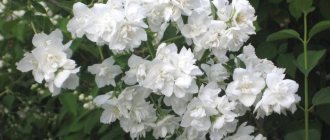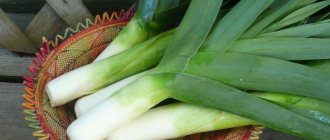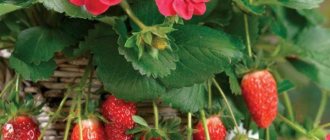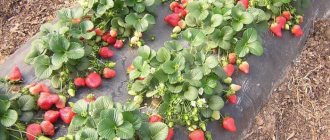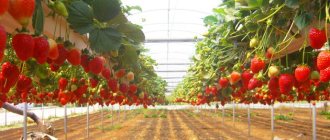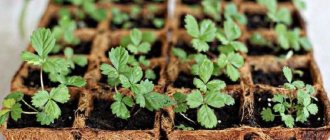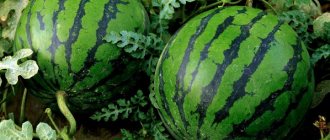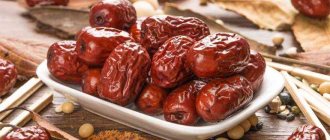Not only is growing pineapples ridiculously easy. Growing pineapples is possible almost anywhere in the world.
This is because the pineapple plant is one of the few tropical fruits that actually lends itself well to growing in pots, meaning you can grow a homemade pineapple indoors.
Having said that, to grow good pineapple fruit (and in reasonable quantities), you need to live somewhere warm and sunny all year round. Below we will talk about growing pineapples outdoors to produce lots of fruit.
I love pineapples. I love the fruit, I love the plant itself and its impressive flower, and once you have a few pineapples... Well, they breed like rabbits, so if you grow pineapples, you'll end up with a lot of them.
I grow a lot of pineapples in my garden. If you plant them in the right place, they require virtually no maintenance .
But let's start from the beginning. Here's everything you ever wanted to know about growing pineapples .
Growing pineapples is easy if you get the basics right.
But first of all, here are some photos of pineapple plants for those who don't know what they look like:
Above are several young pineapples of two different varieties. The second is called Smooth Cayenne, a variety that is grown commercially. I'm not sure what the first one is called. It is a small plant with even spikier leaves and very sweet small fruits.
The following photo shows a mature pineapple plant from above.
The last photo shows a fruiting plant. The stalk comes out from the middle of the plant and you get one pineapple per plant.
A Few Things You Should Know About Pineapple Plants
Pineapples don't need a lot of water. They have very hard leaves so they don't lose much water through evaporation. They can cost very little.
Pineapples need free drainage of the soil.
Pineapples don't need much soil or high-quality soil. They belong to the bromeliad family and, like all bromeliads, do not have a large root system.
Pineapples get a lot of water and food through their leaves.
Pineapples are similar to the slightly acidic soils that most gardens have.
Pineapples grow in full sun, even in the hottest climates, but they also do well in dappled shade.
Pineapples grow very happily in pots or tubs.
What pineapples don't like is
wet, swampy soils,
burning their leaves with concentrated fertilizers,
freezing.
Main importers
Several centuries ago, tropical fruits were delivered to the shores of Europe in the holds of ships. The voyage sometimes took several months. The pineapples that reached the buyer were often of poor quality. Today, ships cross oceans much faster, in just two weeks. During transportation, fruits are stored in much better conditions.
The plane is capable of delivering fruit to any point on the planet, which just a few days before was ripening in a field under the hot rays of the sun.
Modern people have the fortunate opportunity to buy ripe sweet pineapples, which, due to their usefulness and wonderful taste, have become popular in all corners of the earth. They are eaten raw, dried, canned, and juices are made from them. This fruit grows in dozens of tropical countries, but 90% of the world's fresh pineapple imports come from twelve countries:
- Japan.
- USA.
- Canada.
- Belgium.
- France.
- Netherlands.
- Great Britain.
- Germany.
- Italy.
- Korea.
- Singapore.
- Spain.
Planting pineapples
how to grow a pineapple from the top
You can get started in several ways. Most people will start using store bought pineapples. If you know someone who grows pineapples, you can also ask for, steal or buy "suckers", "puppies" or "slips", small seedlings taken from a mature pineapple plant. (I'll tell you more about this later.)
Do not put change in a glass of water. I don't know where people get the idea that everything needs to start in a glass of water. In fact, this is nonsense. In the case of pineapple tops, it's actually best to let them dry out or dry out for a day or two before planting.
If you use toppings, make sure you remove all the fruit pulp. The remaining stem should be bare, dry and clean. Store bought pineapples may already have some rot in that stem. Cut it out if you can, and if not, use a different top. I'll say it again because it's so important: the stem end needs to be dry! Leave your cleaned top on the bench for a day or two if necessary.
You should also remove any small lower leaves. Just take them off. The same goes for suckers. If they are very small or have fallen leaves at the bottom, remove the lower leaves. You may find small roots growing between them already.
Now just make a small hole in the ground or pot and stick your little pineapple in there.
Push the soil back in and secure it around the base so the pineapple sits upright and doesn't fall over. If the soil is dry, give it some water.
That's all. It will grow.
Use of fruits
Pineapple fruits have long been valued for their delicious, aromatic and very juicy pulp. In China, this fruit is the main decoration of the New Year's table, as a symbol of success and prosperity of the family.
Originally decorated pineapple - festive table decoration
In South America, pineapple is considered a medicinal plant. Compresses made from the pulp and coarse fibers of the fruit applied to open wounds relieve inflammation. In the Philippines, they learned how to obtain fiber from hard pineapple leaves, which is used to produce natural fabric.
Despite the fact that the peel of the tropical fruit is considered inedible, in Mexico they prepare a drink from it, similar to our kvass - tepache. Sugar is added to the peeled pineapple peel and fermented. After 2-3 days, the refreshing drink is ready. Serve it in tall glass glasses with crushed ice.
Beneficial features
Pineapple pulp has a sweet and sour taste and contains a lot of sugars and organic acids. The rich content of vitamins B, A and PP, as well as the presence of valuable minerals - potassium, magnesium, iron, zinc, iodine and others ensure its food value.
Pineapple juice and pulp are used:
- for thrombosis, as a blood thinner;
- for obesity - low calorie content and the presence of potassium salts, which remove excess fluid from the body, help reduce weight;
- in case of digestive disorders - improves the activity of fermentation of gastric juice;
- for vitamin deficiencies - juice as a source of useful microelements and vitamins;
- in cosmetology - masks and lotions with the addition of pineapple juice tighten pores and dry out oily skin.
The famous Sophia Loren, who has a girlish figure in adulthood, eats two pineapples every day. The actress attributes the ability to “burn” fat and maintain good health to this fruit.
The pulp of an unripe pineapple not only burns the mucous membrane of the mouth, but also causes severe stomach upset. The ripened fruit loses its laxative properties, acquiring enzymes that improve digestion.
All kinds of jams and confitures are prepared from pineapple, used for filling in baking cakes and pastries. Fruits canned in their own juice are used in a healthy diet and as a component of all kinds of salads.
How much space do pineapples need?
The roots don't need much space, but the plant itself can grow to an impressive size .
My neighbor Henry with his pineapples.
Pineapple leaves are very prickly, so make sure you put them in an area where they can spread without becoming a nuisance.
They are good to grow in clumps if you have the space, or as a (wide) border along paths or driveways.
Plant them about a foot apart (that's pretty close, but that's what I do anyway) and expect individual healthy plants to measure up to a meter across and a meter tall.
Beneficial features
The fruit of the exotic plant is rich in many vitamins and useful elements, among which are B1, B2, B12, PP, A, iron, phosphorus and calcium.
Perfect for those who watch their figure and lead a healthy lifestyle, as it contains a small amount of organic acids and fats, being a low-calorie product.
Pineapples are recommended to be consumed for preventive purposes in case of cardiovascular diseases, to stabilize blood pressure (with the exception of hypotension), thin the blood, cleanse blood vessels, improve the functioning of the digestive tract (do not use if you have stomach diseases), for cosmetic purposes and for weight loss.
Unripe fruits should be consumed with caution due to their high acidity. The leaves contain fibers of a rigid structure that are used for spinning.
How much water do pineapples need?
Basically, it doesn't matter.
If you live in an area where water is scarce, just give them what you can spare. Pineapples grow with very little water . Make sure your soil is heavily mulched to reduce evaporation, and consider growing pineapples in the shade.
(This, of course, depends on the climate you live in. The closer to a tropical or subtropical area you are, the more shade your pineapples can tolerate. If you live in a climate where you need to grow pineapples indoors during the winter, they will need all the sun they can get in the summer.)
If you have plenty of water, great. It is normal for water to always sit in a rosette in the middle of the plant. All excess will simply run away and drain. But this is a waste of time and you should avoid overwatering.
However, it is important that excess water can drain quickly . Don't try to grow them in a bog hole.
Country of origin
Pineapples account for one fifth of all tropical fruits grown in the world. Due to the rapid development of agricultural technology and breeding, today the annual volume of pineapples grown is five times higher than the volume of 1960. The ten countries where pineapples are grown in industrial quantities provide almost all of the world's exports of the fruit. These are the countries:
- Brazil.
- India.
- China.
- Kenya.
- Philippines.
- Nigeria.
- Mexico.
- Indonesia.
- Costa Rica.
- Thailand.
How much and what kind of plant foods?
Pineapples absorb a lot of food through their leaves, and for the first few months after planting they rely solely on their leaves. You have to make sure that the plant food actually lands on the leaves.
If you use artificial and concentrated fertilizers, you will burn your pineapples , so stay away from them. You should stay away from them anyway. They usually do more harm than good.
You can use liquid fertilizers such as fish emulsion or seaweed extract . Make a very diluted solution and simply use a watering can to place it on the pineapple plant and surrounding soil.
If you are using something like granular chicken manure, sprinkle it on the soil very close to the base of the pineapple plant (remember, very small root system) and make sure some falls into the lower leaves.
Of course, the best way is a natural and organic solution that doesn't require you to buy anything. Mix compost into the soil before you plant your pineapple, and then mulch around it. The mulch and compost end up sitting on the lower leaves, and when they break down, they feed the plant.
The color of your pineapple plant's leaves will tell you how well you are doing. If they have a reddish, purple hue, then your pineapple is starving and you need a little help.
Don't panic, they are hard to kill. I rarely get away with that purple tint on them in the first few months. They grow out of it. But keep in mind that you get bigger, tastier, juicier fruit from a well-fed pineapple plant. You'll also get it faster...
Common varieties
Purposeful selection of pineapples has been carried out since the 18th century. Now in Hawaii there is even a special institute for the study of this crop, which has given the world many very popular varieties, the first of which was Del Monte. Most often, individual varieties are combined into classes. The “ancestor” of the vast majority of varieties is the large-tufted pineapple (comosus).
Large-tufted pineapple is the basis for the vast majority of breeders’ experiments
Smooth Cayenne
The class that includes the most varieties. Pineapples of these varieties are most often grown in Hawaii, Mexico, Honduras and the Caribbean. Some varieties are cultivated in the Philippines.
The plants are easily identified by their very short stalk. The leaves are almost smooth, there are few spines. The egg-shaped pineapples themselves weigh 1.5–3 kg. The skin from the base to the top gradually changes color from greenish to yellowish-brown. Ripening occurs gradually; a ripe fruit is recognized by its yellowed crown. The pulp is pale yellow and contains a high concentration of both sugar and acid, which gives the taste a piquant pungency. Pineapples of this group of varieties are most often used for canning. Disadvantages include the length of the fruit ripening period and relatively low immunity against diseases and pests typical of the crop.
The most popular varieties from that group:
- Kew. Grown exclusively on plantations. The leaf length is 1.5 m or more, the rosette diameter is about 2 m. The weight of the fruit varies from 4 kg to 10 kg.
- Champaca. Very small fruits weighing no more than 0.5 kg. The inedible axis is almost absent in the pulp. The diameter of the rosette is no more than 30 cm. The variety is suitable for cultivation at home.
- Amritha. The fruits are in the shape of an almost regular cylinder, slightly tapering at the base. Pineapple weight is 1.5–2 kg. There are few leaves on the top of the fruit. The skin is 5–6 mm thick, almost smooth, without depressions between the “eyes”. These pineapples are easy to clean. The pulp is very dense, almost crispy, not fibrous. The acid content is low. Characterized by a very rich aroma.
- MD-2. The variety is officially recognized as a reference variety for cultivation on an industrial scale. These pineapples account for almost 50% of world exports. The fruits are valued for their external presentation, high sugar content and low acid content. The average fruit weight is 1.5–2 kg. The shelf life of ripe pineapples is long - about a month (versus the usual 15-20 days). The only drawback is susceptibility to late blight and all types of rot.
Also included in this class are the varieties Baron de Rothschild, G-25, Dominguo, Gaimpew, Maipure, Sarawak, La Esmeralda, Hilo.
Photo gallery: pineapples from the Smooth Cayenne variety group
Pineapple Qew stands out with rosette dimensions
Pineapple Champaca - an excellent portioned dessert
Amritha pineapple is very aromatic, with a subtle acidity
Pineapple MD-2 is a variety that has officially been assigned the status of reference
Spanish
Cultivated mainly in Central and Latin America. Especially popular in Puerto Rico. They are easily identified by their crimson-pink bracts. There are no or very few spines on the leaves. The average fruit weight is 1–2 kg. The pulp is the color of butter or almost white, somewhat harsh, with pronounced fibers and a very light aroma. In cross section the fruit is almost square. Most varieties from this group belong to the table category, not dessert. They have very good shelf life and transportability. The most popular of them:
- Pina blanca.
- Red Spanish.
- Cabezona.
- Canning.
- Valera Amarilla Roja.
In some pineapples from the group of Spanish varieties, the characteristic bright shade of the bracts remains even when the fruits ripen - the skin is slightly reddish-pink
Queen
Pineapples in this class are identified by their compact rosette of pale green leaves and greenish skin. The leaf blades are short and spiny. The average weight of the fruit, as a rule, does not exceed 1.5 kg. The shape resembles a ball. The pulp is very aromatic, golden yellow or saffron in color. This rich shade is due to the increased content of beta-carotene and lycopene. These varieties are cultivated mainly in Africa. Their taste is not as pronounced as that of American pineapples, but the acid content is lower.
The most common varieties:
- Natal Queen.
- Macgregor.
- Z-Queen.
- Cannara.
Queen pineapples are easily identified by their characteristic fruit shape.
Abacaxi
It cannot be said that these varieties are cultivated en masse. They are mainly grown in Mexico and Venezuela. A characteristic feature is almost white, very tender and juicy pulp. The average weight of the fetus is 1–2.7 kg.
The group includes varieties:
- Kona Sugarloaf.
- Black Jamaica.
- Montoufar.
Pineapples of the Abacaxi class are distinguished by their very light flesh.
Baby (or Nana)
Mini pineapples, the height of the fruit is no more than 10–15 cm, the diameter is 8–10 cm. The diameter of the rosette does not exceed 30 cm. The taste is excellent. The pulp is very juicy, sweet and aromatic, absolutely without fiber. Often cultivated at home. They produce a stable harvest.
Miniature pineapples are in no way inferior to large fruits in taste.
Growing on farms
The maximum income from tropical fruits grown on plantations can only be obtained by breeding early-ripening plant varieties. However, using selected varieties when planting is not the only way to obtain a rich harvest. Technologies that can accelerate the ripening of fruits help to quickly obtain a bountiful harvest.
Work on growing pineapples begins with planting plant cuttings. The cuttings should already have roots, and their height should reach 20 cm. Future fruits are planted in a two-row manner, the distance between the cuttings can reach 1.5 m, and the row spacing is left even wider.
The tropical climate, systematic watering, and the use of modern methods of pest control and fertilizers help plantation owners to harvest ripe pineapples three times a year. But this is not all that farmers use to achieve the planned harvest. It is not so easy to achieve mass flowering of plants.
Many years ago, for this purpose, smoky fires were lit on pineapple plantations, causing the pineapples to bloom en masse. Today they use acetylene treatment of pineapple bushes. Exposure of plants to gas has become a way to speed up the formation of flower buds. However, the inflorescence that appears does not guarantee a harvest.
It was already mentioned above that pollination of plants does not allow the fruit to develop fully. After pollination, the seeds begin to develop, but the fruit itself does not grow to the required size. Therefore, farmers prevent pollination of inflorescences in various ways.
Most often, this method is used to combat insects, but in some countries hummingbirds are involved in pollination. In order not to harm the miniature birds, a protective cap is put on each pineapple inflorescence.
Conditions for growing on a windowsill
To plant a pineapple at home, you need to choose an already ripe fruit in the store. What to look for when purchasing:
- The leaves should be dense and juicy, healthy in appearance. The edges may be a little dry - this is even good.
- There should be a sprout in the middle of the rosette - this is a guarantee that it will sprout and bloom.
- There should be no sour smell. Overripe fruits are rarely delivered to supermarkets, but after a long period of storage the fruit may deteriorate.
To be on the safe side, it is better to buy planting material at different points - two or three copies. One will definitely germinate. You need to buy planting material in spring or summer - this increases the chances of flowering and fruiting.
